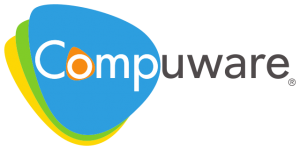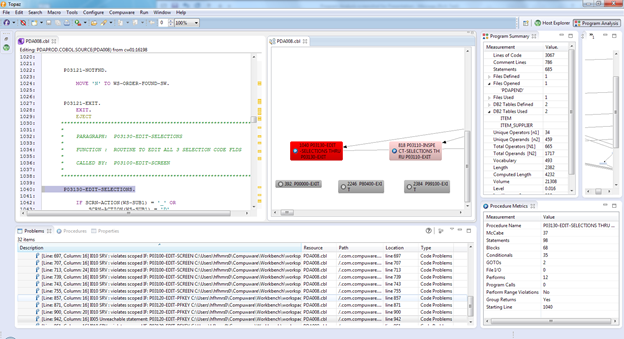The mainframe may not be the cool kid on the block, but it’s here to stay. Regardless of their cool factor, IBM z Systems mainframes support the core systems of record at the heart of many of today’s enterprises. Leveraging those investments to improve customer engagement and enhance employee effectiveness is critical for such organizations as they compete in a mobile-first digital world.
Mainframes are here for the long run, but mainframe professionals are another story. As this critical workforce retires, many enterprises are experiencing a skills crunch, requiring creative human resource and technology solutions.
 Once again, human challenges trump technology issues in enterprise IT – but enterprises that can maintain the workforce for their mainframe systems will find these stalwarts of IT can serve as the transactional backbone of their digital initiatives.
Once again, human challenges trump technology issues in enterprise IT – but enterprises that can maintain the workforce for their mainframe systems will find these stalwarts of IT can serve as the transactional backbone of their digital initiatives.
Compuware Topaz: Modern Development and Quality Assurance Tool for the Mainframe
As today’s experts retire, it’s essential for such organizations to recruit, train, and motivate a new generation of mainframe professionals – younger people who have typically spent their career in the distributed open systems world.
To help address this need, Detroit-based Compuware is delivering Topaz, a data visualization and program analysis tool that opens up the mainframe for a new generation of professionals.
Compuware shrewdly built Topaz on Eclipse, the popular and mature open source Integrated Development Environment (IDE) platform that most of today’s developers are comfortable with. As a result, Topaz enables a new mainframe development workforce quickly master mainframe programs and data.
The first release of Topaz from early in 2015 focused on data visualization. That release enabled developers and data architects to discover, visualize, and work with both mainframe and non-mainframe data in a common, intuitive manner. Using Topaz, younger developers as well as seasoned IT pros can manipulate enterprise data and applications to meet the modern digital demands of mobile and analytics.
Only three months later, Compuware rolled out the second release of Topaz, focusing on program analysis. This version helps the full range of developers better understand and work with complex mainframe applications. Key features of this release include:
- Structure chart – indicates interdependencies among modules (PL/1 procedures or COBOL paragraphs) as well as the levels of complexity for each module with different shades of red.
- Program summary – presents program attributes such as size, complexity, names of files, and DB2 tables.
- Procedure level metrics – a range of useful metadata including number of performs, conditionals, GOTOs, and the McCabe complexity metric, which indicates the number of paths through the code.
- Logic flow – graphically represents the organization of large, complex programs, showing the structure of even “spaghetti code” legacy apps so that developers can understand the program flow.
Code problem identification – presents undefined fields, range violations and dead code.
The program analysis tool is shown in the illustration below, with the code editor in the upper left, the structure chart in the upper middle, and the program summary to the right of the structure chart.

Compuware Topaz Program Analysis Interface (Source: Compuware)
Compuware is also making an important statement with their three-month release cycle. To achieve this pace – generally unheard of in mainframe circles – Compuware has implemented Agile development practices. This modern approach to building software enables them to deliver a continuous stream of innovation to their customers, and also sets an important example for the industry.
The Impact of Digital on the Mainframe
Digital drives a growing portion of mainframe traffic at banks and other enterprises. Furthermore, the mobile world transaction influx is requiring many enterprises to maximize their mainframe investment – not only in terms of performance, but also in cost containment.
Even so, mobile transactions – as well as other even more progressive digital offerings – are driving innovation, and the mainframe remains at the center of such efforts.
Making mainframes an integral part of an enterprise’s digital efforts can also help address the skills shortage. Because mainframe systems of record are becoming so intimately associated with web and mobile systems of engagement, the mainframe workforce is likely to become less segregated from the rest of IT. This trend will help attract younger tech professionals who want to stay at the forefront of digital innovation.
Compuware considers taking proactive steps to maintain a qualified mainframe workforce an aspect of mainframe stewardship in enterprises that rely upon such systems. With the right strategy and modern tooling, next-generation CIOs can leverage their mainframe application portfolios in ways that generate transformative business value and sustainable competitive advantage.
Careers for mainframe-savvy millennials promising lucrative salaries and many years of robust demand for their skills won’t hurt either. The old guard may be retiring, but the mainframe remains well-positioned to be the digital workhorse for the new millennium.
Compuware is an Intellyx client. At the time of writing, no other organizations mentioned in this article are Intellyx clients. Intellyx retains full editorial control over the content of this article.



